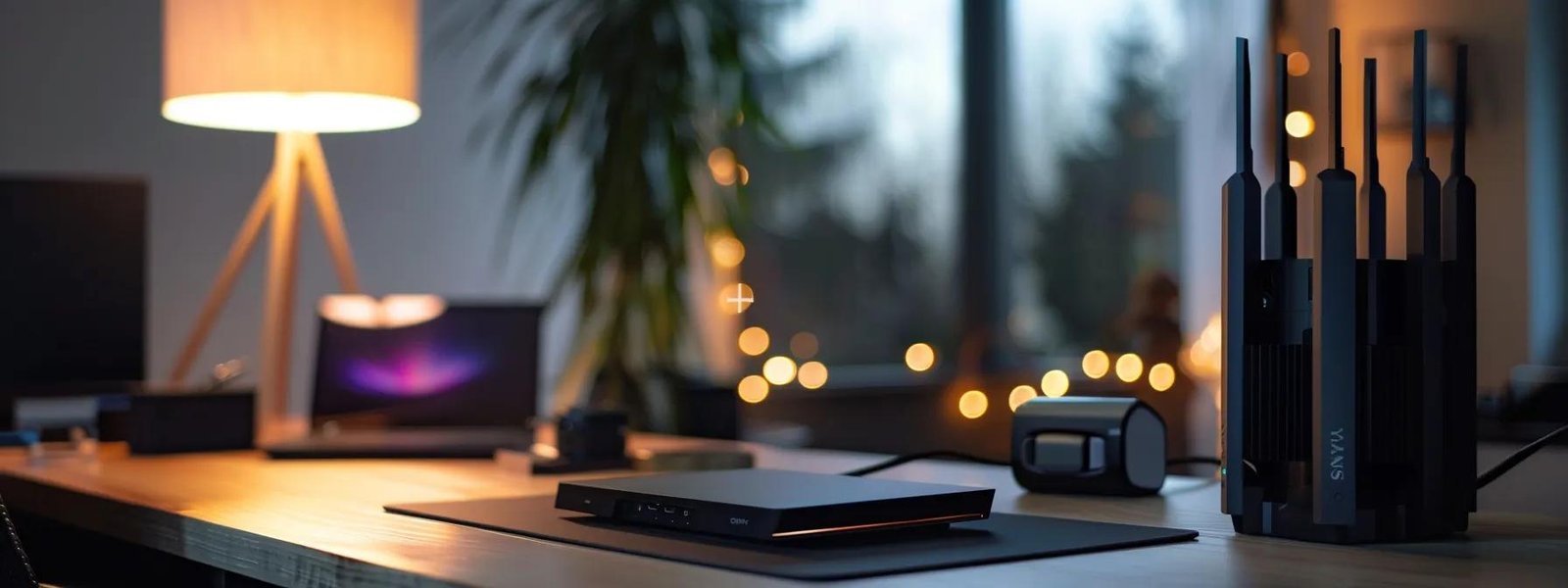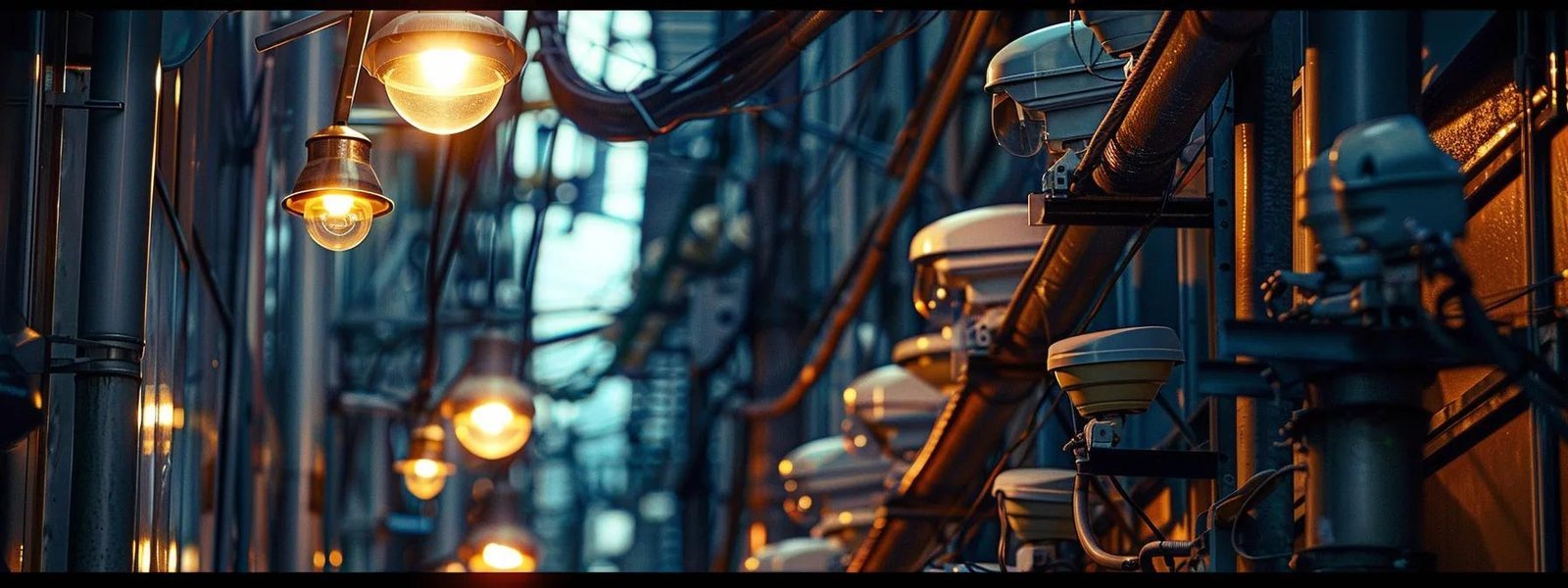
When it comes to protecting your home, choosing the right security camera system is crucial. Many homeowners face the dilemma of selecting between wired and wireless options. This article will explore the key differences in installation, performance, and security features, including encryption for data protection. By understanding the pros and cons of home security systems wired vs wireless, readers will be better equipped to make an informed decision that enhances their outdoor home security. This guide aims to address common concerns and help homeowners find the best solution for their needs.

Wired security cameras operate through a direct connection to a recording device, ensuring reliable video transmission. Their strengths include consistent performance, superior night vision, and immunity to bandwidth issues often faced by wireless security systems. However, challenges such as installation complexity, including electrical diagnostics, and limited placement flexibility can arise. This overview sets the stage for a deeper exploration of how wired systems function, their advantages, and the potential drawbacks.
Wired security cameras function by connecting directly to a recording device through a power cord, which ensures a stable and reliable video feed. This direct connection eliminates issues related to bandwidth that can affect wireless home security systems, providing consistent performance even in challenging conditions. Additionally, wired systems often include backup options, ensuring that footage is securely stored and accessible, making them a strong choice when considering wireless security camera vs wired options for home security systems.
Wired security solutions offer several strengths that make them a reliable choice for homeowners. One key advantage is their superior motion detection capabilities, which ensure that any movement is captured without delay. Additionally, wired systems often utilize IP cameras that provide high-definition video quality, making it easier to identify details in recorded footage. With options for cloud storage, homeowners can access their video feeds through a mobile app, allowing for real-time monitoring and peace of mind.
Wired security cameras come with certain challenges that homeowners should consider. Installation can be complex, often requiring professional assistance to run cables through walls or ceilings, which may not be feasible for all properties. Additionally, while wired systems provide reliable video quality, such as 1080p resolution, they may lack the flexibility of wireless security options, limiting placement to areas near power sources. Homeowners also need to consider the need for a memory card or additional storage solutions to ensure that footage is securely saved, as wired systems may not always offer cloud storage options like some wireless security systems do.

Wireless security cameras operate without the need for coaxial cables, relying instead on a wireless access point for video transmission. This section will explore how wireless systems function, highlighting their benefits, such as easy installation and flexibility in placement. It will also address challenges, including potential interference and issues during an internet outage, which can affect performance.
Wireless security cameras function by transmitting digital video signals through a wireless access point, eliminating the need for physical cables. This technology allows for greater flexibility in camera placement, making it easier to integrate into a home security system or home automation setup. Many wireless cameras also support power over Ethernet (PoE), which simplifies installation by combining power and data transmission through a single cable, enhancing the overall efficiency of the system.
Wireless security solutions offer significant advantages for homeowners seeking flexibility and ease of installation. These systems operate through a wireless network, allowing for simple placement in various locations without the constraints of cables. In the event of a power outage, many wireless cameras come equipped with a rechargeable battery, ensuring continued operation and peace of mind. Additionally, some models support Ethernet connections, providing an alternative for those who prefer a more stable connection while still enjoying the benefits of a wireless setup.
Wireless cameras present several challenges that homeowners should consider when choosing a surveillance system. One significant issue is the reliance on internet access; if the internet goes down, the camera may not function properly, impacting the ability to monitor the property. Additionally, while many wireless cameras offer high image resolution, they can experience interference from other devices, which may affect video quality and reliability. Homeowners should also be aware that accessing footage on a mobile device can be hindered by connectivity issues, making it essential to evaluate the overall network stability before opting for a wireless solution:

Installing wired security cameras involves running wires for power supply and video transmission, which can be complex but ensures reliable performance. Setting up wireless security cameras requires a stable router connection and may involve authentication steps for secure access. Maintenance and upkeep for both systems are essential, including managing memory storage and ensuring optimal functionality.
Installing wired security cameras requires careful planning and execution to ensure optimal video quality and performance. Homeowners must run cables from each camera to a digital video recorder (DVR), which can be complex, especially in larger homes or those with multiple floors. This installation method provides reliable motion detection and eliminates issues related to bandwidth, making it a strong choice when comparing a wired vs wireless security camera system.
Setting up wireless security cameras involves connecting them to a reliable computer network, which is essential for optimal performance. Homeowners should ensure that their gateway is positioned to provide strong signal coverage throughout the property. Additionally, integrating a network video recorder (NVR) can enhance the system’s functionality, allowing for efficient storage and management of footage, whether saved on an SD card or through cloud options. Proper placement and configuration of these components can significantly improve the effectiveness of a wired and wireless camera system, ensuring comprehensive surveillance coverage.
Maintenance and upkeep for both wired and wireless security cameras are essential to ensure optimal performance and longevity. For wired systems, regular checks on cable connections and the digital video recorder (DVR) are necessary to prevent any disruptions in video feed. In contrast, wireless cameras may benefit from solar power options, which can reduce reliance on traditional power sources and enhance their functionality. Homeowners should also routinely update software and firmware for both systems to protect against vulnerabilities and improve features, ensuring their security setup remains effective and reliable.

When selecting between wired and wireless security cameras, performance and reliability are crucial factors. This section will examine signal reliability in various environments, the impact of power outages and network issues, and the available storage and data management options. Understanding these elements will help homeowners make informed decisions about their security systems.
Signal reliability is a critical factor when choosing between wired and wireless security cameras for home use. Wired systems typically offer consistent performance, as they are less susceptible to interference from other devices or environmental factors. In contrast, wireless cameras may experience signal degradation in areas with thick walls or numerous electronic devices, which can impact video quality and monitoring capabilities. Homeowners should assess their specific environment to determine which system will provide the most reliable coverage for their security needs.
Power outages and network issues can significantly impact the performance of security cameras, making it essential for homeowners to consider these factors when choosing between wired and wireless systems. Wired security cameras typically remain operational during power outages if connected to a backup power source, ensuring continuous surveillance. In contrast, wireless cameras may rely on battery power, which can deplete quickly, leaving homes vulnerable during critical moments. Understanding these limitations helps homeowners make informed decisions about their security needs and ensures they select a system that provides reliable protection at all times.
When considering storage and data management options for security cameras, homeowners must evaluate the differences between wired and wireless systems. Wired cameras often connect to a digital video recorder (DVR), providing ample storage capacity and reliable access to recorded footage. In contrast, wireless cameras may utilize cloud storage or local SD cards, which can vary in capacity and accessibility. Understanding these options helps homeowners choose a system that meets their storage needs while ensuring that critical footage is securely saved and easily retrievable.

Security and privacy are critical factors when selecting between wireless and wired security cameras. Wireless networks may expose vulnerabilities that can be exploited, while wired systems face risks of physical tampering. This section will discuss protective measures to secure both types of systems, ensuring homeowners can safeguard their properties effectively.
Wireless networks can present several potential vulnerabilities that homeowners should be aware of when considering security cameras. These vulnerabilities include the risk of unauthorized access, where hackers may exploit weak passwords or unencrypted signals to gain control over the camera system. Additionally, interference from other wireless devices can disrupt the camera’s performance, leading to gaps in surveillance coverage. Homeowners must prioritize securing their wireless networks by using strong passwords and enabling encryption to protect their privacy and ensure reliable operation of their security cameras:
Wired security systems, while offering reliable performance, are not immune to physical tampering risks. Since these cameras are connected via cables, they can be more vulnerable to intentional damage or disconnection by intruders. Homeowners should consider installing cameras in secure locations and using tamper-resistant hardware to minimize these risks and ensure continuous surveillance.
To secure a home security system effectively, homeowners should implement several protective measures. For wireless cameras, using strong, unique passwords and enabling encryption can significantly reduce the risk of unauthorized access. Additionally, regularly updating the camera’s firmware ensures that any security vulnerabilities are addressed promptly, maintaining the integrity of the surveillance system.

Choosing the right security camera system for a home involves assessing specific needs, budgeting for the investment, and making an informed decision based on individual circumstances. Homeowners should evaluate their property layout and security requirements to determine whether wired or wireless options are more suitable. Additionally, understanding the costs associated with each system will aid in selecting the best solution for effective home security.
When assessing a home’s specific needs for security cameras, homeowners should consider factors such as property layout, potential vulnerabilities, and personal preferences. For instance, larger homes may benefit from wired systems that provide consistent video quality across multiple rooms, while smaller properties might find wireless cameras more convenient due to their flexible placement options. Understanding these unique requirements helps homeowners make informed decisions, ensuring that the chosen security camera system effectively meets their safety and monitoring needs.
Budgeting for a security investment is essential for homeowners looking to enhance their property’s safety. When choosing between wired and wireless security cameras, it is important to consider not only the initial purchase price but also installation costs, ongoing maintenance, and potential upgrades. For instance, while wired systems may have higher upfront costs due to installation complexity, they often provide long-term reliability, making them a worthwhile investment for many homeowners.
When making an informed decision about security camera systems, homeowners should carefully evaluate their specific circumstances, including property layout and security needs. For instance, larger homes may benefit from wired systems that provide consistent video quality across multiple areas, while smaller properties might find wireless cameras more convenient due to their flexible placement options. Understanding these factors helps homeowners choose a system that effectively addresses their security concerns and enhances their overall peace of mind.
Choosing between wireless and wired security cameras is crucial for ensuring the safety and security of a home. Homeowners must assess their specific needs, property layout, and budget to make an informed decision that best suits their circumstances. Understanding the strengths and challenges of each system empowers homeowners to select a solution that provides reliable surveillance and peace of mind. Ultimately, investing in the right security camera system enhances protection and contributes to a safer living environment.


